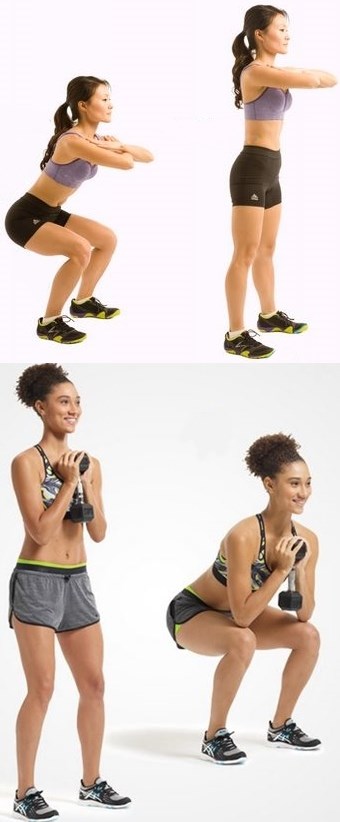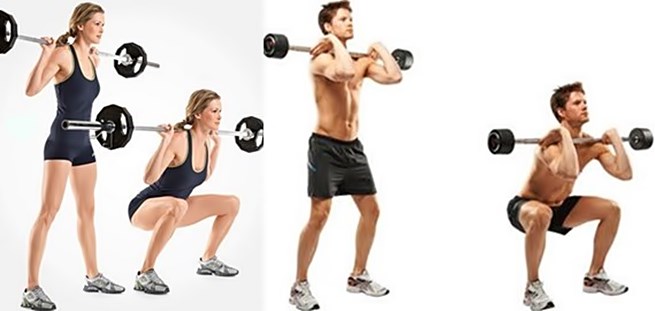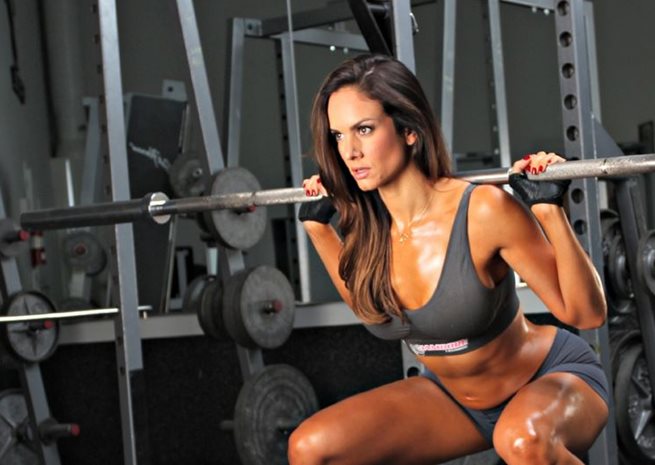 Do you want strong, shapely legs and rounded, tight glutes? Squatting is the exercise every fitness guru will prescribe. But not just any type of squat: it is important to do it correctly.
Do you want strong, shapely legs and rounded, tight glutes? Squatting is the exercise every fitness guru will prescribe. But not just any type of squat: it is important to do it correctly.
Maintaining good form is crucial for any exercise. This is especially true of squats. If you do them in poor form (otherwise known as the wrong way), you will not reap the benefits and could even do yourself harm.
That is why I am going to lay out the proper way to squat, in all its painful details.
- Have comfortable tennis shoes and choose a flat, firm, non-slippery ground to stand on. Keep your knees soft. Spread your legs wider than the width of your hips, toes turned out, and make sure that your weight is mostly on your heels (you should even be able to lift your toes off the ground).
- Extend your arms out and parallel to the floor, palms facing down; cross your arms at elbow; or pull your elbows close to the body, palms facing each other and thumbs pointing up.
- Keep your chest open, head up, shoulders down (away from the ears) and slightly back. The abs muscles remain contracted throughout, as if you are expecting a punch in the gut. The spine is in neutral position, neither arched nor rounded.
- Inhale as you descend. Move your hips slightly back and bend the knees in the same direction as the toes, careful not to let your knees go over the toes. Most of your body weight is in the heels. The glutes are jutting out to the back more and more as go lower and lower.
- Squat as much as you can. Ideally, your tights should be parallel to the floor at the bottom of the move.When you reach the bottom of the move, hold the position for a second or two.
- Start exhaling slowly as you straighten your legs by activating inner thighs and glutes. The abs are engaged, the pelvis moving slightly forward and up, towards your navel.Your body weight is in the heels and you are doing your best to spread the floor, pushing it with your left foot to the left and with your right foot to the right (without actually moving the feet at all, mind you).
- At the top of the move keep the knees soft, and start all over again.
Squats with weights are more effective, but add them only after you are able to do this exercise in perfect form. It is more difficult to squat deeper when you are weighted, and deep squats with less weight are better than shallow squats with heavy weight.
The best way to add weight to your squat routine at home is with dumbbells. Take two dumbbells, or one heavy, and hold them with elbows close to the body and palms facing each other.
Squats with a barbell behind the neck, over the trapezoid muscles (back squats), or with the barbell in the front of the body, close to the collar bone (front squat) should be undertaken under the guidance of a trainer.

Mistakes to avoid
- Not warming up: Squats are a complex exercise and you need to prepare your body. Devote several minutes to jumping rope or jumping Jacks to warm up your muscles and joints. If you are squatting with a weight, do a few squats with body weight only.
- Letting the knees cave inward: Turn the toes out at a 5 to 20 degrees angle (the wider the stance, the bigger the angle) and keep the knees pointing in the same direction as the toes.
- Leaning the body forward: Place most of your weight in the heels. This will help keep the torso upright and hips back and down.
- Descending too quickly: You may be tempted to go down too quickly, especially after you add weights. Don’t, because this can increase the risk of injury. While it is fine to explode with power when returning to a standing position, moving down into the squat must be slower in order to maintain proper form.
- Not squatting deep enough: I said in step 5 that you should bend until your tights are parallel to the ground. If you can’t tell how far that is, place a suitable sized box or chair of behind you and keep on squatting until you gently tap it with your butt. To test the height of your box / chair, sit on it and check that upper body is at 90 degrees to the tights and the tights at 90 degrees to the lower legs. Do note that some people prefer to squat all the way, allowing hips to go lower than the knees. This is also fine, providing you do the move in good form.
- Making excuses: No, squats will not make your dodgy knee hurt, not if you do the exercise properly! Maintain good form, don’t overdo it, allow you body a day or two to recover between exercises, and you will be fine. Plus, your legs and your glutes will thank you for all the effort you’ve put in by looking great!









